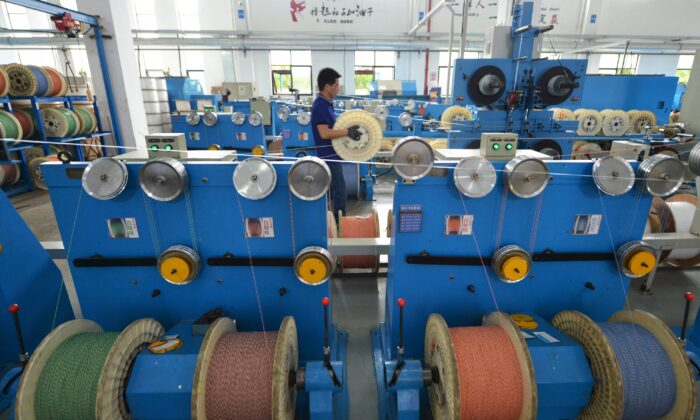
BEIJING—China’s factory output grew faster than expected in November, supported by stronger energy production and a moderation in sky-high materials costs, but new curbs to fight rising COVID-19 cases hit retailers in the world’s second-largest economy.
data, along with a slowdown in investment growth, underlines the persistent headwinds facing the economy, which have already prompted policymakers this month to ratchet up support.
“ economy remained quite weak in November,” said Zhiwei Zhang, chief economist at Pinpoint Asset Management.
“Domestic consumption weakened further, which is driven by the zero-tolerance policy that hurts the service sector and the continued slowdown in the property sector.”
Factory production rose 3.8 percent in November from a year earlier, official data showed on Wednesday, beating expectations for a 3.6 percent rise and accelerating from a 3.5 percent increase in October.
China’s coal output hit a record in November as Beijing urged miners to ramp up production to ensure sufficient energy supplies in the winter heating season, while daily crude oil throughput rebounded in November.
Retail sales, however, rose 3.9 percent in November from a year earlier, below the 4.6 percent growth expected in the poll and October’s 4.9 percent rise.
Fixed asset investment rose 5.2 percent in the first 11 months from the same period a year earlier, slower than the 5.4 percent increase tipped by a Reuters poll and the 6.1 percent in January–October.
China’s economy, which is losing steam after a solid recovery from the pandemic last year, faces multiple challenges heading into 2022, due to a property downturn and strict COVID-19 curbs that have hit consumer spending.
Despite the pick-up in industrial activity in November, new COVID-19 outbreaks are creating fresh problems for policymakers as the Omicron variant of the virus threatens the global economic outlook.
More than a dozen Chinese-listed companies said they had suspended production in coronavirus-hit parts of Zhejiang province in response to new COVID-19 curbs, causing their share prices to plunge this week.
Separate data on Wednesday showed China’s property downturn persisted in the final quarter of 2021 with home prices, sales, investment, and construction mired in negative territory last month, weighed by weak demand and a cash crunch among developers.
Some analysts expect fourth-quarter gross domestic product growth to dip below 4 percent from the 4.9 percent pace in the previous quarter, although the full-year growth could still be about 8 percent, above the official target of over 6 percent.
China’s red-hot factory-gate inflation cooled slightly, driven by a government clampdown on runaway commodity prices and an easing power crunch.
By Gabriel Crossley and Kevin Yao
Pezou : China’s Factories Speed up but New COVID-19 Pain Hits Retailers